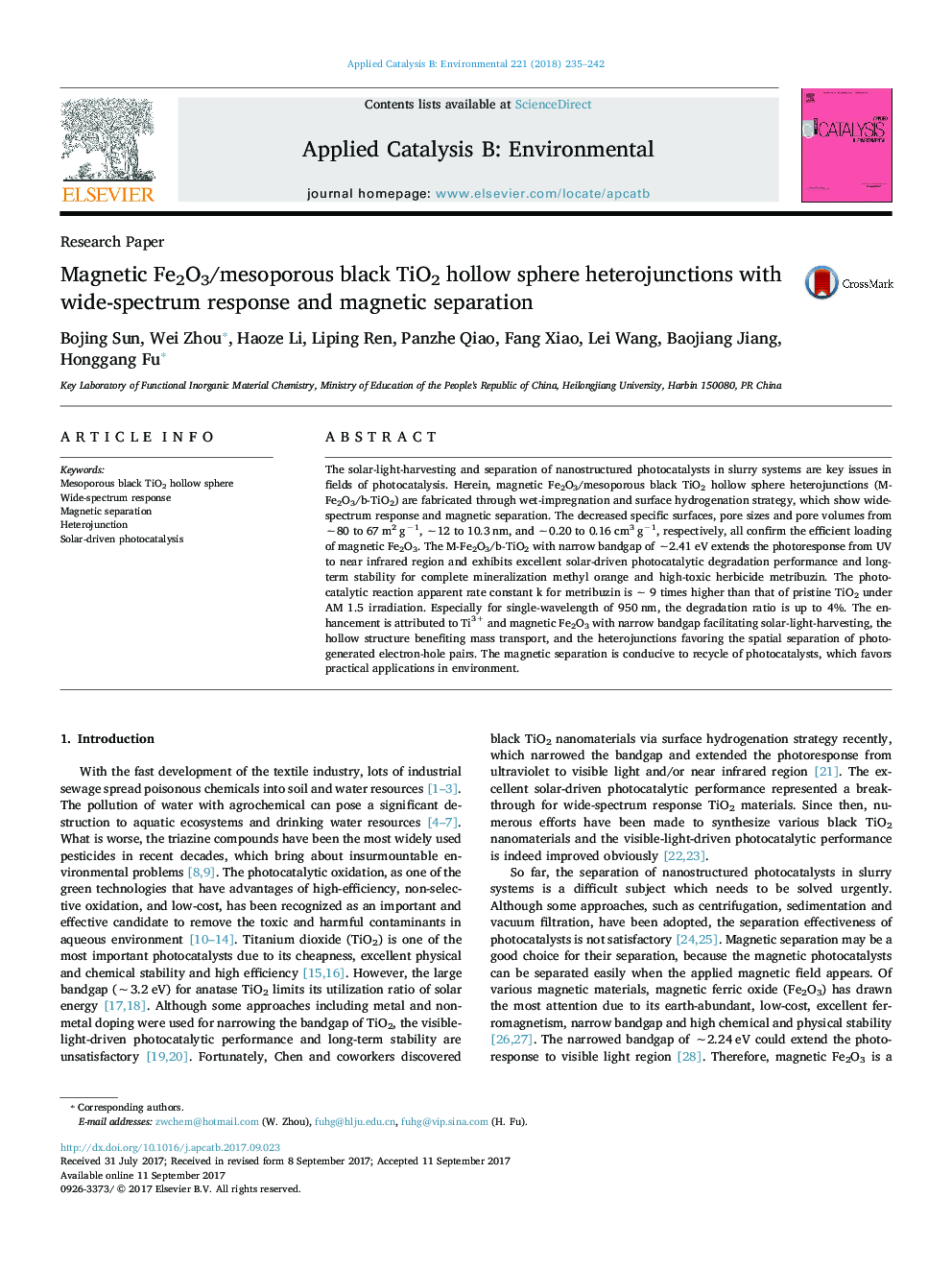| Article ID | Journal | Published Year | Pages | File Type |
|---|---|---|---|---|
| 6453424 | Applied Catalysis B: Environmental | 2018 | 8 Pages |
â¢Magnetic Fe2O3/mesoporous black TiO2 hollow sphere heterojunctions are fabricated.â¢It shows wide-spectrum response (â¼1800 nm) and magnetic separation.â¢It exhibits excellent solar-driven photocatalytic degradation performance and long-term stability.â¢The magnetic separation is conducive to recycle of photocatalyst.â¢The enhancement is attributed to Ti3+, hollow structure and the formation of heterojunctions.
The solar-light-harvesting and separation of nanostructured photocatalysts in slurry systems are key issues in fields of photocatalysis. Herein, magnetic Fe2O3/mesoporous black TiO2 hollow sphere heterojunctions (M-Fe2O3/b-TiO2) are fabricated through wet-impregnation and surface hydrogenation strategy, which show wide-spectrum response and magnetic separation. The decreased specific surfaces, pore sizes and pore volumes from â¼80 to 67 m2 gâ1, â¼12 to 10.3 nm, and â¼0.20 to 0.16 cm3 gâ1, respectively, all confirm the efficient loading of magnetic Fe2O3. The M-Fe2O3/b-TiO2 with narrow bandgap of â¼2.41 eV extends the photoresponse from UV to near infrared region and exhibits excellent solar-driven photocatalytic degradation performance and long-term stability for complete mineralization methyl orange and high-toxic herbicide metribuzin. The photocatalytic reaction apparent rate constant k for metribuzin is â¼Â 9 times higher than that of pristine TiO2 under AM 1.5 irradiation. Especially for single-wavelength of 950 nm, the degradation ratio is up to 4%. The enhancement is attributed to Ti3+ and magnetic Fe2O3 with narrow bandgap facilitating solar-light-harvesting, the hollow structure benefiting mass transport, and the heterojunctions favoring the spatial separation of photogenerated electron-hole pairs. The magnetic separation is conducive to recycle of photocatalysts, which favors practical applications in environment.
Graphical abstractMagnetic Fe2O3/mesoporous black TiO2 hollow sphere heterojunctions are fabricated through wet-impregnation and surface hydrogenation strategy, which show wide-spectrum response (â¼1800Â nm) and magnetic separation, and exhibit excellent solar-driven photocatalytic degradation performance and long-term stability due to the synergistic effect of hollow structure, narrowed bandgap and the formation of heterojunctions.Download high-res image (227KB)Download full-size image
